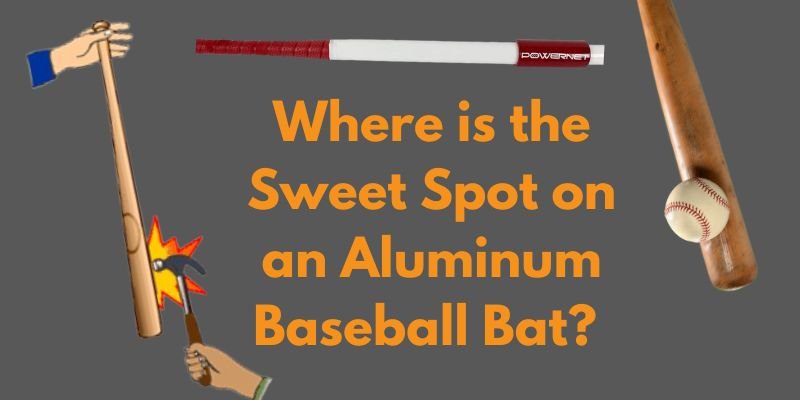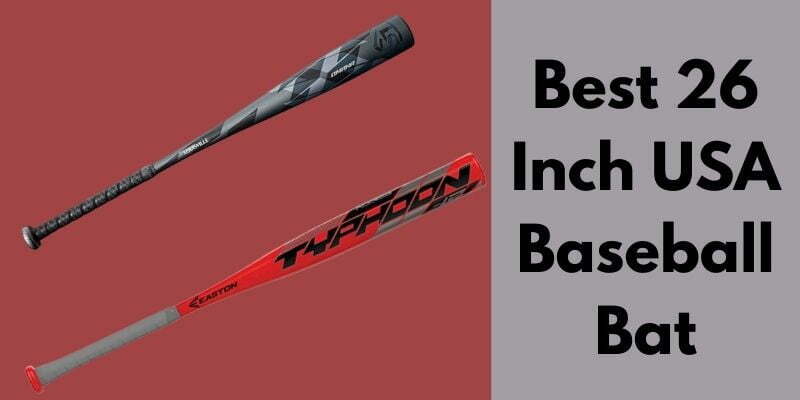If you are a beginner baseball player, you will or have heard your coach mention the bat’s sweet spot. You probably have heard that a bat’s sweet spot is the best hitting point. And so, locating the sweet spot on your baseball bat is paramount.
But why is it the best spot?
Where is the sweet spot of baseball bat located? And,
How do you find the sweet spot on a baseball bat?
Read this article to the end to learn more about baseball bats’ sweet spots. This article discusses everything you need to know about the sweet spots of baseball bats. Essentially, it will answer questions like what and where is the sweet spot on an aluminum baseball bat and others.
Let’s get started.
What is a sweet spot on a baseball bat?
Scientifically, a sweet spot is a baseball bat’s center of percussion or vibration node zone. They are regions around vibration nodes – between the center of percussion and vibration nodes. Vibration nodes are areas that produce no reactive shock when the baseball hits the bat. Thus, the batter does not feel the impact of the collision of the bat and the ball. Note that baseball bats have multiple vibration nodes. But, sweet spots on baseball bats are associated with vibration nodes on the barrel part of the bat.
Baseball-wise, a sweet spot is a point on a baseball bat that produces the utmost hit. In other words, the points create maximum ball exit velocity.
Generally, a baseball bat sweet spot is the region on the bat that offers the utmost performance and minimal vibration.
Why does a bat have a sweet spot?
There are two main reasons why baseball bats have sweet spots. The sweet spots on the baseball bats maximize the impulsive force of the baseball, for starters. This effect influences the velocity of the hit and how far the batted ball goes. Typically, the sweet spots are located between the first and second vibration nodes, which cancel out the vibration. The vibration cancellation means very little bat’s energy is lost, and much is transferred to the ball. This significantly boosts the ball’s impulse force, leading to high ball exit velocity.
Besides, the spots minimize the impact force transmitted to the hands of the batter. When the bat collides with the baseball, the collision usually creates vibration waves on both objects. The bat’s vibration travels to other parts and then to the batter’s hands as a reactive shock. Notably, the vibration waves occur when the ball strikes any other bat part except the sweet spots. Unlike other regions, these areas do not vibrate when struck – regardless of the extent of the impulsive blow hitting them. Thus, no vibration waves are created, meaning that the batter does not feel the impact of the collision.
Where is the sweet spot on a baseball bat located?
Different bats have sweet spots in varied zones, depending on the type and shape of the bat. However, there is no significant difference in the location of the points. There is usually a 3.8 – 5 cm variation in different types of bats.
Typically, sweet spots on the baseball bats are associated with vibration nodes, which correspond with the bat’s vibration/bending modes. Note that a solid standard baseball bat has four types of vibration modes only.
Usually, the first vibration mode has two vibration nodes located between 5 and 7 inches from both ends. The second vibration modes have four nodes.
- Two nodes about 17 cm from each end,
- One node located about 5 cm from the center of the bat toward the handle, and
- One about 7 cm from the handle end
On the other hand, the third bending mode does not have a vibration node, meaning there are no sweet spots also. The fourth bending mode has a vibration node located about 6 cm from the barrel end.
Note: Sweet spots on baseball bats are commonly associated with the vibration node(s) on the barrel part.
The first vibration mode is usually considered the fundamental vibration mode. That said, let’s dive deeper into determining where baseball bats have their sweet spots.
Where is the Sweet Spot on a Wood Baseball Bat
Standard baseball bats have multiple vibration nodes hence several sweet spots. This depends on the bat’s vibration mode. As mentioned earlier, solid composite, wood, or aluminum bats have multiple vibration nodes. But, when it comes to batting, only the nodes on the barrel are considered sweet spots.
Wood bats have a sweet spot roughly 17 cm from the barrel end. This spot is ideal for both performance (maximum exit power) and impact sensation. They also have sweet spots about 13 cm from the barrel end for performance. Here, the batter feels a little “sweet” shock.
Where is the Sweet Spot on an Aluminum Baseball Bat?
Aluminum bats are believed to have longer sweet spots than wooden bats. They have a hoop vibration mode – alongside the typical bending modes – that extends their sweet spots. As such, aluminum baseball bats do not have a fixed point. Their sweet spots are anywhere between 10.16 and 25.4 cm from the barrel end.
The hoop mode gives the aluminum bats an extended sweet spot, giving the batter a bigger allowance for errors. The hoop bending mode also limits vibration and boosts ball exit velocity significantly.
Essentially, the barrel oscillates – alternately compresses and expands, substantially boosting the ball’s exit speed. The vibration occurs only on the spot where the ball strikes. Thus, the batter cannot feel the impact. That means sweet spots on aluminum baseball bats are especially for optimum performance.
How to find a sweet spot on a bat
You can find your baseball bat’s sweet spot by the feel of vibration. You can also use sound to find a sweet spot – hear the sound change on hitting different points.
You will need a hammer or a baseball to find a sweet spot on your bat. You may also need a paper cone. To find a sweet spot, follow the following steps.
- Hold your baseball bat with your thumb and index finger, hanging loosely downwards.
- Using a hammer or a baseball, tap the bat gently along the barrel downwards towards the barrel tip.
- Feel the change in vibration as you tap various spots on the barrel. As you get closer to the sweet spot, you will feel the vibration decrease. At the sweet spot, you will feel no vibration.
Follow the steps to find the baseball bat sweet spot using sound.
- Attach a paper cone loosely to the knob on your bat’s handle.
- Hold the bat hanging loosely downwards with two fingers.
- Tap the bat along the barrel using a baseball bat
- Notice the change in the sound produced by the cone on hitting various spots. When you hit the sweet spot, you will hear no sound from the cone.
Final Words
Noticeably, sweet spots are a vital feature of baseball bats. They influence the batter’s performance significantly. Essentially, they determine how far the batted ball can go and how many swings you can make. Thus, finding and hitting with the sweet spot is equally significant as having the best baseball bats in the market.
FAQs
Does a longer bat have a bigger sweet spot?
No. The baseball bat size does not affect the size of a sweet spot. Instead, it influences the location of the point.
Does the weight of a baseball bat affect how far the ball goes when it is hit
No. A baseball bat’s weight does not affect the ball velocity or how far the ball goes.
Where is the Sweet Spot on a composite Baseball Bat?
The location of sweet spots on a composite baseball bat depends on the bat’s design. Hollow bats have sweet spots between 10 and 25 cm from the barrel tip. Solid composite baseball bats, on the other hand, have a sweet point at about 17 and 13 cm from the barrel end.
What factors determine the location of a baseball bat’s sweet spot?
Baseball bat sweet spots are usually determined by the vibration nodes on the bat and the center of percussion.




